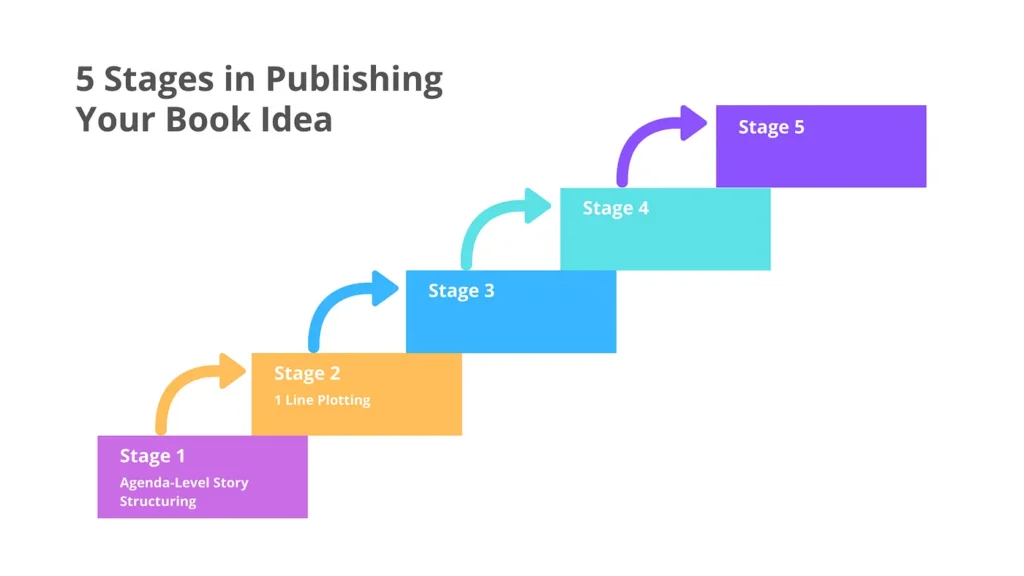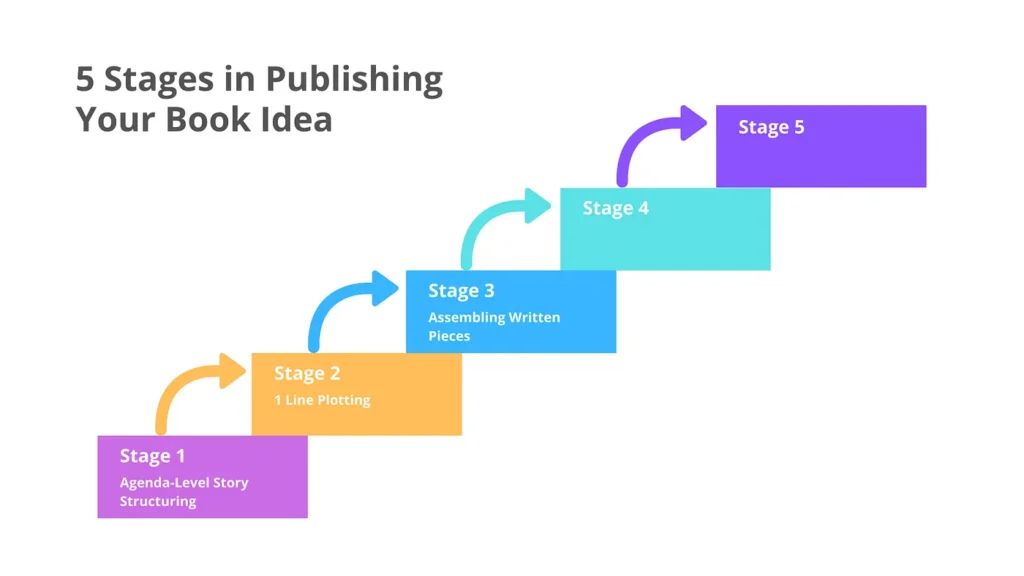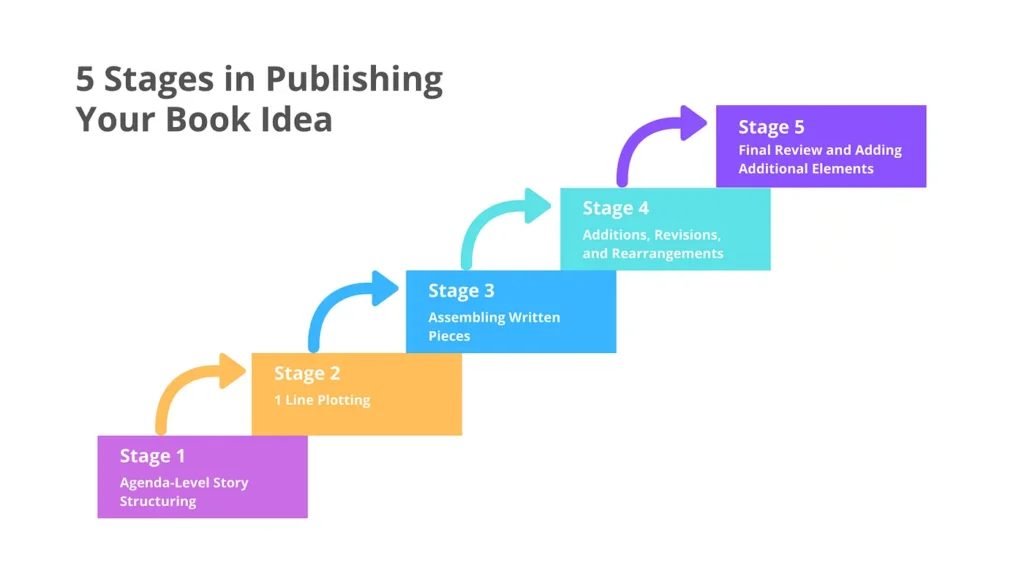Hey friends, in case you haven’t heard, my first book,
Behind the Uniform Skirt: Ikigai-less Frontlines, is officially out.

- If you’ve ever found it difficult to discover your true purpose, this book is for you.
- If you’re interested in exploring the hidden struggles of modern Japan and understanding why finding Ikigai can be so challenging, this book is for you.
- If you want insights into Japanese marriages and the intriguing reasons behind wearing short skirts in winter, this book is for you.
Available on Amazon in both Kindle and paperback formats across 15 countries, including the US, UK, and Japan. Check it out here.
I’m sharing this article to help you with your own book journey.
The content, which originally appeared on Quora, has been transformed into a book. Today, I want to provide you with insights into the process.
It took me nearly two months to turn a draft into a final product, and I’m here to share what I learned to save you time and effort.
If you’re considering publishing your own book, you’re in the right place.
This article is going to serve your needs by revealing the entire production process of my book, “Behind the Uniform Skirt.” You’ll get an inside look at my journey and learn key strategies to streamline your own book launch.
In this article, I’ll break down the book creation process into five stages, each with valuable insights to aid your journey:
- Stage 1: Agenda-Level Story Structuring
- Stage 2: 1 Line Plotting
- Stage 3: Assembling Written Pieces
- Stage 4: Additions, Revisions, and Rearrangements
- Stage 5: Final Review and Adding Additional Elements
Now, let’s dive into the behind-the-scenes of “Behind the Uniform Skirt.”
Stage 1: Agenda-Level Story Structuring

Period: July 14 — July 18
📝 Action Items:
- Defined Core Message: Determined what the book is fundamentally about and the big question it aims to address. This involved clarifying the main theme and how it connects with readers’ needs.
- Outlined Macro Story: Created a broad narrative structure, mapping out how the story would unfold from beginning to end, ensuring a coherent flow and engagement.
- Reviewed Past Articles: Analyzed previously published content on platforms like Quora and Medium. This helped identify which topics resonated most with readers and which content could be repurposed.
- Compiled Episode List: Drafted a comprehensive list of existing episodes and identified where additional content was needed to fill gaps in the narrative.
🔑 Key Decisions Made:
- Protagonist Focus: Opted to use “You” as the primary perspective rather than “We.” This decision was made to avoid over-generalization and ensure that readers could directly relate to the content. The aim was to involve readers in the narrative actively, creating a more personalized and engaging experience.
- Book Category: Chose to focus on “Young Japanese People and Their Environment” based on extensive analysis of my online articles. The data showed that topics related to this category were significantly more popular. For instance, my article on why Japanese female students wear short skirts in winter was a standout hit, leading to a chapter in the book named after it. This category was selected logically to align with readers’ interests and maximize the book’s appeal.
🌟 Realizations and Lessons:
- Late Theme Decision: Realized that determining the book’s theme later in the process led to a misalignment in the content of the episodes. I found that many episodes that I have been writing about were not directly related to the chosen theme, which required adding around 30 new episodes. In future projects, I plan to define the theme and necessary episodes early on to avoid this issue and streamline the writing process.
- Reader-Centric Approach: Learned the importance of focusing on what readers care about rather than my own preferences. Despite its drawbacks, the delay in deciding on the theme was, in this sense, a strategic choice to ensure the book met readers’ needs. This approach required gathering extensive data over a year, which was time-consuming but essential. The insights gained will help refine and accelerate future projects.
Stage 2: 1 Line Plotting

Period: July 19 — July 30
📝 Action Items:
- Core Message Distillation: Condensed each section’s essence into a single sentence to capture the main idea succinctly.
- Episode Inventory Check: Identified missing episodes and completed an inventory check of my article library based on the list from Stage 1.
- Episode Summarization: Summarized each episode, including those yet to be written, into a single sentence to ensure clarity and focus.
- Story Consistency Review: Verified that the story maintained a coherent timeline, clear scope, and consistent character settings throughout.
🔑 Key Decisions Made:
- Authenticity Through Personal Experience: Based characters on my personal experiences to enhance authenticity. By drawing from my own background, experiences, and daily life, I aimed to create characters that are both believable and compelling.
- High Standard Content Delivery: To ensure the book meets and surpasses reader expectations, I included a conclusion chapter early in the introduction. This chapter summarizes answers to key questions posed in the book’s back cover, setting a high standard for the content that follows and demonstrating my commitment to delivering valuable insights.
🌟 Realizations and Lessons:
- Cover Design vs. Reader Expectations: Struggled with balancing reader expectations with book cover promises. I faced the challenge of designing a book cover that would entice readers without making unrealistic promises. I learned the importance of crafting a cover that is both visually appealing and honest about the book’s content by analyzing successful bestsellers in similar genres. This process highlighted the delicate balance between drawing in readers and maintaining credibility.
Stage 3: Assembling Written Pieces

Period: July 31 — August 10
📝 Action Items:
- Integrated Written Episodes: I compiled all previously written episodes into a single document. Earlier stages had only included titles and links to published content. Now, I copied and pasted the full text of each episode, ensuring they flowed seamlessly.
- Checked Consistency: Reviewed episodes for consistency in perspective and setting. Ensured that no episode contradicted another and that all fit coherently within their respective sections.
- Adjusted Content: Evaluated whether the length and detail of each episode supported the arguments of their sections. Edited out unnecessary content that didn’t add value and expanded on areas that needed more depth.
- Monitored Overall Length: Assessed the total length of the book to ensure it fell within the desired range.
🔑 Key Decisions Made:
- Book Length: Opted for a target length of 150–200 pages. Research showed this was typical for similar books, striking a balance between too short and too long.
- Illustration Placement: Decided to use illustrations sparingly, ensuring they complemented the text without overshadowing it. As the focus was on narrative rather than a picture book, I carefully selected key points for visual enhancement.
🌟 Realizations and Lessons:
- The Challenge of Cutting Content: Reducing the text from previously published episodes was more emotionally challenging than anticipated. It’s tough to part with work you’ve invested so much time in, even if you know it’s necessary. The urge to keep everything is strong, but it’s important to remember that sometimes less is more.
- Brevity is Key: I learned that clear and concise communication often has a greater impact. Overly detailed or verbose sections can dilute the message. This stage reinforced the value of making every word count and avoiding unnecessary elaboration, which I repeatedly reminded myself throughout the process.
Stage 4: Additions, Revisions, and Rearrangements

Period: August 11 — August 20
📝 Action Items:
- Rearranged the Order: Reorganized sections to ensure the story flowed smoothly. This involved reviewing each argument for persuasiveness and logical coherence. After many revisions, often during late-night work sessions, I settled on a sequence that felt right. The process required patience, as my decisions evolved over time.
- Fixed Tenses and Perspectives: Ensured that tenses and perspectives were consistent throughout. Historical sections were written in the past tense, while scenes from the protagonist’s present used the present tense. This thorough checking was crucial for clearly conveying the narrative and avoiding any confusion.
- Completed Missing Materials: Addressed the gaps identified in Stage 2 by completing the missing episodes and descriptions. This step was crucial in filling out the story and ensuring no part of the narrative was left hanging.
- Illustrations: Put the finishing touches on approximately 20 illustrations. Each piece was carefully crafted to complement the text and enhance the reader’s experience. It was like adding the final brushstrokes to a masterpiece.
- Revised Published Articles: Reviewed reader feedback on previously published articles and updated them based on their comments and questions. This involved adding new data, updating outdated information, and clarifying points where more detail was requested. This process ensured each article was polished and current.
🔑 Key Decisions Made:
- Reviewed All Feedback: Decided to read through every piece of feedback, even if not all comments were included in the final work. This approach was aimed at learning from reader responses and improving my writing. Since much of the book was based on previously published articles, understanding reader reactions was crucial for refining the final product.
- Maintained Diligence: Despite time constraints and fatigue, I committed to handling this stage with consistent diligence. With some articles receiving over 1,000 comments, this was a significant task. Nonetheless, it provided valuable insights and moments of satisfaction after all.
🌟 Realizations and Lessons:
- Order Matters: The sequence in which information is presented is crucial. Even if the material remains the same, the order can significantly influence how readers interpret the message. Mastering this aspect of storytelling is where true skill is demonstrated, as finding the most effective sequence can dramatically impact the narrative’s effectiveness.
- Growth Through Feedback: The feedback from readers is a goldmine for personal and professional growth. It provides invaluable insights into how my work is received and where improvements can be made. As long as I continue to share my work and engage with my audience, I will keep evolving as a writer, constantly learning and improving from the reactions and suggestions of those who read my work.
Stage 5: Final Review and Adding Additional Elements

Period: August 21 — August 31
📝 Action Items:
- Fine-tuned the story’s flow: Reviewed a detailed final checklist that I created based on observations from Stage 1. This included verifying the consistency of kanji usage in the English text, ensuring uniformity in character portrayals, and checking that counterarguments were adequately addressed to avoid one-sided perspectives.
- Enhanced the English: Refined the language by reducing the use of adverbs and avoiding repetitive phrases, ensuring that the writing was sharp and engaging.
- Removed unnecessary content: Streamlined the manuscript by eliminating redundant sections to keep the arguments concise and avoid a monotonous tone.
- Added endnotes: Included endnotes to cite sources and provide additional context, adding credibility and depth to the content.
- Included the Dedication: Wrote a Dedication section to honor those who inspired or supported the work, adding a personal touch to the book.
- Created the Table of Contents: Designed a clear Table of Contents to facilitate easy navigation and help readers find specific sections at a glance.
- Wrote the About the Author: Composed an About the Author section that introduces me as both a writer and an individual, providing readers with insight into my background and motivations.
- Added the Copyright page: For self-publishing, created a Copyright page to protect the intellectual property and ensure all legal aspects were covered.
🔑 Key Decisions Made:
- Maximized accessibility: Acknowledged that some readers might be new to the topic of Japan, so I decided to include as much additional information as possible to make the book more approachable and informative.
- Prioritized detail-oriented work: Realized that the final stage requires meticulous attention to detail, which influenced the decision to allocate extra time despite the tasks seeming straightforward. This careful approach was crucial for maintaining the quality of the final output.
- Challenged my language skills: As a non-native English speaker, I set a personal goal to expand my vocabulary and vary my expressions. This involved significant effort and time to avoid falling back on familiar phrases.
🌟 Realizations and Lessons:
- Objective editing challenge: After reading the manuscript multiple times, it became increasingly difficult to view it with fresh eyes and maintain an objective perspective. To overcome this challenge, I introduced deliberate breaks into my routine. By engaging in unrelated activities, such as reviewing illustrations and participating in physical exercise, I was able to refresh my perspective. These activities provided a mental reset, allowing me to return to the manuscript with a clearer, more objective viewpoint, which ultimately enhanced the quality of the editing process.
- Experience with Parkinson’s Law: The tight deadline highlighted Parkinson’s Law, which states that work expands to fill the time available. This principle became evident as I worked under time constraints, with the scope of the project seeming to grow to fit the available timeframe. Despite the pressure, the intense focus required was highly rewarding. The experience of working with such concentrated effort was not only satisfying but also addictive, as the challenge of meeting the deadline drove a deeper engagement with the project.
By the end of this stage, I completed the self-publishing process and published the book on KDP on September 1, 2024.
I hope you found this article helpful for your own book journey.
Feel free to ask questions or share your thoughts.
Stick around for my next article, where I’ll discuss my personal rules for writing a book.
See you soon 👋